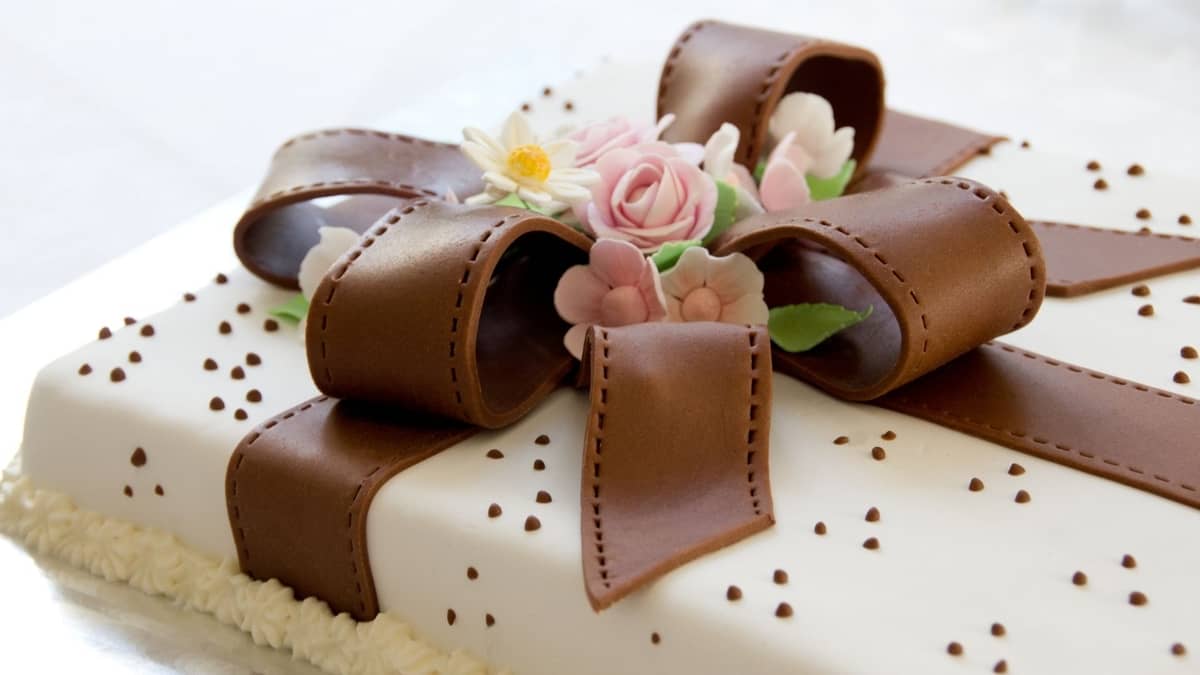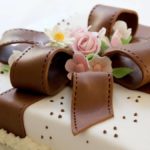Last Updated on February 3, 2023
Want to know how to make brown food coloring but don’t want to use chocolate? Already have standard food coloring colors at home? If so, you will want to know how to make dark brown food coloring.
Food coloring is a great way to make frosting and baked goods more exciting. A standard pack will come with colors such as blue, yellow, red, and green. You can also easily combine these standard colors to create other different shades as well.
Making your own colors from food coloring is easy, but you have to know the right colors to use. Otherwise, you will end up with an ugly, dull gray or some other unattractive shade. Fortunately, you can make a lovely shade of dark brown with the standard colors of food coloring.
Keep reading to find out how to make brown food coloring.
Different Types Of Food Coloring
Before you learn how to make brown food coloring, it is important to learn the different types of food coloring. Certain food colorings work better with certain types of foods than others.
When it comes to baking, there are several different types of food coloring you can use. Though oftentimes you can use them interchangeably, sometimes it is best to use one kind over another depending on the recipe you are making. The main types of food coloring available include liquid dye, liquid gel, gel paste, and natural and powdered dye.
Traditional liquid (liquid dye)
Traditional liquid or liquid dye is the most common type of food coloring available. It is an inexpensive option and it provides a lighter tint, so you will need to use a light if you are trying to get a bright, vibrant color.
It comes in small plastic squeeze bottles that are easy to use. Liquid dye is traditionally made of synthetic dye with a water base. You can find it at just about any grocery store or easily online as well.
Liquid gel
Liquid gel dye is similar to liquid dye. Typically sold in small dropper bottles, it contains synthetic coloring with a base of water, glycerin, or corn syrup. Unlike liquid dye, it is much thicker and more concentrated.
The liquid gel produces vivid, bright colors. It is great for coloring doughs, icings, candies, and macarons, as a little bit goes a long way.
Gel paste
Gel paste contains synthetic coloring with a base that is water, glycerin, or corn syrup. It comes in small pots or jars and is very thick. It is great to use as it will not spill, though you will probably have to use a toothpick to put it into your food.
Gel paste is great for macarons, frosting, cakes, and cookies. However, since it is so thick it can be hard to work into some doughs.

Natural food coloring
Natural food coloring uses only natural ingredients for colors and is free of corn syrup and glycerin. It comes in small dropper bottles and will give food a lighter tint.
Natural food coloring uses foods and spices such as carrot, saffron, beet, and turmeric to achieve the coloring. It is a great option for anyone that may have a sensitivity to synthetic dyes or those who are simply looking to avoid them.
Powdered dye
Powdered dyes are made of synthetic coloring, but they do not contain any water, glycerin, or corn syrup. They come in jars and you can use them as a powder or add a few drops of alcohol to use them like paint.
Powdered dye is great for recipes that are sensitive to additional liquids, such as macarons. They produce vibrant, bright colors in your baked goods.
What You Need to Follow This Tutorial For How to Make Brown Food Coloring
Ingredients
To make dark brown food coloring, you will need:
- Red food coloring (liquid or gel)
- Green food coloring (liquid or gel)
- Blue Food Coloring (liquid or gel)
- The food you wish to color, such as frosting, batter, or dough
To make light brown food coloring, you will need:
- Red food coloring (liquid or gel)
- Green food coloring (liquid or gel)
- Blue Food Coloring (liquid or gel)
- The food you wish to color, such as frosting, batter, or dough
Equipment
- Medium mixing bowl
- Rubber spatula
- Teaspoons
Gel Food Coloring 10x10ml Colors Set
Step-by-step instructions
Step one: Add your frosting, dough, or batter to a medium bowl
Add the item you plan on colorings, such as frosting, dough, or batter to a medium mixing bowl.
Step two: Add your food coloring
- For Dark Brown: Add 150 drops of red food coloring, 150 drops of green food coloring, and six drops of blue food coloring to the mixing bowl. Instead of counting out 150 drops of each, you can just measure out about 1 1/2 teaspoons of red and green food coloring.
- For Light Brown: Add 75 drops of red food coloring, 75 drops of green food coloring, and three drops of blue food coloring to the mixing bowl. As an alternative to counting out 75 drops of red and green, you can measure out 3/4 of a teaspoon of those two colors.
Use a rubber spatula to mix the food coloring into your frosting or batter. For the dough, you will likely have to knead the coloring in.
Step three: Let it sit
Let the bowl sit for around 30 minutes if possible. This will let the colors saturate more to create a dark, chocolate-brown color.
Tips and Tricks
Be careful when using food coloring, as it can stain clothes, skin, and even countertops. Be sure to wipe it up right away after spilling to avoid any staining.
Though you can use natural food coloring, it is best to use liquid or gel. It will likely take more than 150 drops of natural green and 150 drops of natural red to create a dark brown.
If you are wondering what colors make brown food coloring, it is any colors that are opposing. So, if you don’t have red and green food coloring, you can also use any colors that are opposite to each other on the color wheel.
You can also use blue and orange or yellow and purple as well, as they will also create brown. No matter what opposing colors you use, just follow a ratio of 1:1.
Making Light Brown Fondant
Coloring fondant is a great way to achieve different colors in your cake. Fondant allows you to create smooth finishes on your cakes. In addition, you can make different figurines and designs with fondant since it is moldable.
When adding food coloring to fondant, it is best to use gel food coloring. The gel food coloring will provide vibrant colors to your fondant while not adding too much liquid to it.
If you use liquid food coloring, you run the risk of incorporating too much liquid into your fondant. This can change the texture of your fondant and make it difficult to work with as it may not be set.
For how to make brown food coloring for fondant, you will need:
- One pound of fondant
- Blue gel food coloring
- Green gel food coloring
- Red gel food coloring
Step-by-Step Instructions
- On a clean work surface, form your ball of fondant into a ball. Then add 3/4 a teaspoon of green gel food coloring, 3/4 teaspoon of red food coloring, and three drops of blue food coloring.
- After adding your food coloring, knead the fondant to incorporate the food coloring into it. In addition to kneading, you can also roll out your fondant as well to incorporate the color.
- If need be, add in more food coloring until you reach your desired shade of brown. Try to use equal parts red and green when adding to the fondant. Allow the fondant to rest for 30 minutes to deepen the color before using it on your cake or other baked goods.
Does Food Coloring Expire?
If you want to know how to make brown food coloring you should know if your food coloring is still good or not. With proper storage, food coloring can last for years without expiring or even last indefinitely.
For best results, store it in a cool, dry location away from the sun. It is important to keep food coloring out of the sun as it may cause the colors to fade.
While gel paste, powder, liquid, and liquid gel can last indefinitely, natural food coloring does have a shelf life. Natural food coloring from the store can last for anywhere from a couple of months to a couple of years. However, natural food coloring you make at home from fruits and vegetables typically only lasts for two to three weeks.
If you notice a change in color, smell, taste, or texture of your food coloring, it is best to throw it out just in case. If you notice any mold growth in your food coloring you should throw it out immediately. Be sure to tightly close the lids of your food coloring to keep them fresh and to help prevent accidental spills.
Knowing How to Make Brown Food Coloring
Fortunately, making brown with food coloring is quite simple as it just requires opposing colors. Though you can use any type of food coloring to make brown, it is best to use a liquid or gel type. This will give you the best-looking, vibrant brown and it is a great way to make brown if you don’t want to use chocolate.
Did you enjoy this tutorial on how to make brown food coloring? If so, please share your thoughts in the comment section below if you liked this post on making brown food coloring.
How To Make Dark Brown Food Coloring
Equipment
- Teaspoons
Ingredients
- Red food coloring (liquid or gel)
- Green food coloring (liquid or gel)
- Blue Food Coloring (liquid or gel) l
- The food you wish to color, such as frosting, batter, or dough
Instructions
- Add your frosting, dough, or batter to a medium bowl.Add the item you plan on coloring, such as frosting, dough, or batter to a medium mixing bowl.The food you wish to color, such as frosting, batter, or dough
- Add your food coloring.Add 150 drops of red food coloring, 150 drops of green food coloring, and six drops of food coloring to the mixing bowl. Instead of counting out 150 drops of each, you can just measure out about 1 1/2 teaspoons of red and green food coloring.Use a rubber spatula to mix the food coloring into your frosting or batter. For dough, you will likely have to knead the coloring in.Red food coloring (liquid or gel), Green food coloring (liquid or gel), Blue Food Coloring (liquid or gel)
- Let it sit.Let the bowl sit for around 30 minutes if possible. This will let the colors saturate more to create a dark, chocolate brown color.
Notes

Ever since she was a young girl, Anna has been a lover of desserts. As an adult, she enjoys
baking a variety of desserts from cakes, cookies, brownies, bread, and more from scratch. She
enjoys sharing her passion for baking with others who also have a sweet tooth. From properly
measuring ingredients to making sure they are the correct temperature, Anna knows the
importance small details can make in baking. She wants to share her experience with others in
hopes they can make the most delicious baked goods. When she’s not busy blogging, Anna
enjoys trying new recipes in the kitchen.



